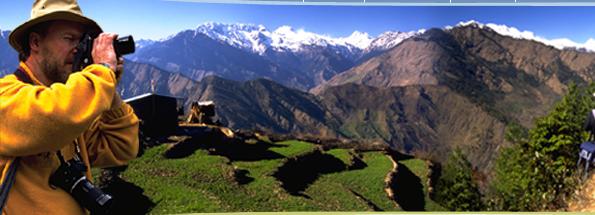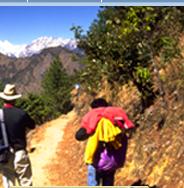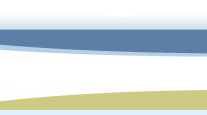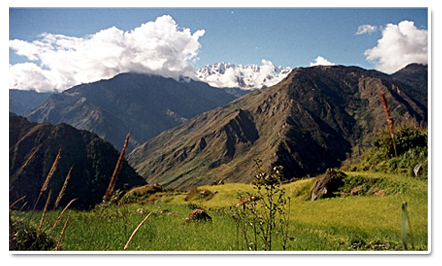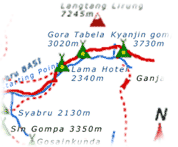| The Langtang Himal
is a region north part of Kathmandu. vally and it lies
just south of Tibetan border. The langtang valley is
surrounded by high peaks of great appeal. It has become
famous ever since the British mountaineer Bill Tilman
described it as the most beautiful valley in the world.
The highest peak in this area is Shisapangma or Gosaithan
8027m in Tibet. The course from the Langtang valley
to Gosaikund is full of diversity and it is attracting
many tourists. The langtang valley is also know as the
treasure house of Alpine plants. The whole valley is
cover with flowers during the summer.
This high and isolated region is inhabited by Tamangs
whose religious practices, language and dress are much
more similar to Tibetan.
Gosaikunda is one of the hindu holy place and is considerd
to be made by Lord Shiva. The Buddhist Tamang that live
nearby also revere it as their holy place. Every August
on full moon night lake is thronged with pilgrims for
a big festival. On other days the lake sits in a tranquil
atmosphere.
This is the most easily accessible of all areas from
Kathmandu. It lies about 70k.m north of Kathmandu. valley,
is an area inhabited by sherpas. The language , culture
and dress of the Helambu sherpas are very different
from those of Solu khumbu sherpas.
| Fact Box |
|
| Starting
from: |
Kathmandu |
| Ending
at: |
Sundarijal |
| Grade: |
Moderate-Medium |
| Highest
access of the trek: |
4600 m (Surya kunda
pass) |
| Culture
encounter |
Tamang, Sherpa, Gurung,
Magar, Thakali |
| Trekking
type |
Teahouse |
| Himalayan
sights: |
Langtang, Langtang
Lirung, Gosainkunda etc |
| Most
Attraction of the trek: |
Close Landscapes,
Villages |
| Best Seasion: |
February, March, April, May,
October, November |
| Meal: |
breakfast, lunch, & Dinner) |
| Activities:
|
Trekking |
| Transportation:
|
Car / Van |
| Accommodation: |
Teahouse |
| Minimum
Group Size: |
1 |
| Per
day Walking: |
5 to 7 hours |
| Itinerary type |
Fixed / Customized |
| Day
to Day Itinerary |
| Day
01 |
Arrive in Kathmandu
Airport & Transfer to Hotel
Welcome dinner in the evening. |
| Day
02 |
Full
day Sightseeing in Kathmandu Valley.
We will be visiting three of the famous heritage
sites in Kathmandu. You will visit first the Swayambunath
Stupa (Monkey Temple). It is said
that Swayambunath Stupa is more than 2,000 years
old, and it symbolizes knowledge. The painted
eyes on all four sides symbolize the all-seeing
power of Buddha. It is an important Buddhist place
where pilgrims from all over the world come.
It is a 30 minutes drive to Boudhanath
Stupa, another important Buddhist
pilgrims site. This ancient Stupa is considered
one of the biggest in the World. Every morning
and evening, many Buddhist devotees come here
to pray and circumambulate enabling the visitors
to observe local religious practices.
One
of the holiest hindu shrines in the world,
The fabulous pagoda houses the linga
of Lord Shiva and people bathe in the Bagmati
River with a faith of cleansing themselves spiritually.
Many Sadhus or Hindu Ascetics live here. During
religious festivals, Hindus come to make offerings,
and it is sometimes very crowded.
Bhaktapur
Durbar Square: This former royal
palace complex offers the elegant 15th century
Palace of 55 win-dows, artistic courtyards, the
Golden gat.
Patan
Durbar Square : Durbar Square an
enchanting melage of palace buildings, courtyards
and pagoda temples, is the center of Patan's religious
and social life. |
| Day
03 |
Bus
ride to Dhunche for 8 hours. Dhunche
is the center of this area and has public offices
and army camp. |
| Day
04 |
Dhunche
to Tholo Syabru(2200m)
The trail continues in the road till Barkhu village(Tamang).
After here the path will leave the roadway and
go on the flankto the right . you will have to
make ascent. Crossing streams ascend a little
further and you will reach the end of the ridge
called Noudhara. You will have a clear view of
Langtang infront of you. The path continues on
the flank with Gompa go the end of the ridge and
you will be Syabru village. |
| Day
05 |
Syabru
to Lama Hotel (2500m)
Descend from village trek down through the terraced
fields to go around the valley. After crossing
the suspension bridge trail descends down hill
till Langtang khola. Keep trekking through deep
forest going uphill all the way to Lama hotel. |
| Day
06 |
Lama hotel
to Langtang valley (3307m)
After Lama hotel you will climb through a Rhododendron
forest . the ground covered by moss. Trees have
ferns and epiphytic orchids on them. It looks
like semi tropical jungle. |
| Day 07 |
Langtang
to Khayanjing gompa(3800m)
From Lngtang village climb up the road with stone
walls and you will come to Chorten of Mani stones
.you will see that Langtang Khola gets closer
all the time and the valley becomes more open
and wider.climb up the rocky moraine ahead and
you will reach Khayanjing Gompa. |
| Day 08 |
Khayanjing
Gompa rest day
Khayanjing Gompa is the last permanent settlement
with a small Gompa and a cheese factory. Use it
as a base for day hikes, exploring the upper valley
try to climbing the small hill north of Khayanjing
or Tsergori(5033m). which lies upvalley from Khayanjing.
Upper valley is ringed by spectacular snow peaks
including fluted peak Langtang Lirung and the
Tibetan named Dorje Lakpa |
| Day 09 |
Khayanjing
Gompa to Lama hotel(2500m)
After rest day Trail continues down hill till
Lama hotel. |
| Day 10 |
Syabru
to Singgompa (3300m)
The path continues uphill through Rhododendron
and pine forest till Sing Gompa. There is old
Gompa and cheese factory. |
| Day 11 |
Sing Gompa
to Gosaikund Lake(4320m)
From here the path gently ascends the mountain
flank with bare trees. After crossing the ridge
. you will be going through a forest full of moss
and fern. While you reach to Lauribinayak there
is a spectacular views of Dhaulagiri, Annapurna,
Ganesh Himal and Langtang Lirung. The best view
point for entire trek. Crossing over the ridge
of Saraswati Kund apper the first of several Lakes
dedicated to different divinities. Gosaikund is
the third lake, sacred place of Hindus and Buddhist. |
| Day
12 |
Gosaikund
to Ghopte(3300m)
After crossing the Lauribinayak pass(4610m) trail
descends through stone path and forest to reach
Ghopte. |
| Day 13 |
Ghope to Kutumsang
From here trail continues ups and down through
forest and walking in ridge of hill. You can have
a good view of Helambu and Tadhi Valley. |
| Day 12 |
Kutumsang to Chisopani
(2150m)
Trail descends all the way to Patibhanjang. From
here climb uphill for 2hours to reach chisopani.
In a good day you can have a another spectacular
views of mountain from Annapurna range to Everest. |
| Day 13 |
Chisopani / Sundarijal
to Kathmandu.
After chisopani trail goes uphill for one hour
till Bhanjang through forest. From Bhanjang trail
descends all the way to Sundarijal via forest
and several villages along the way. Bus ride will
take about one hour from sundarijal to Kathamdnu. |
| Day 14 |
Free day in Kathmandu |
| Day 15 |
End of Pragramme |
Trek Price as per above
program
Group Size |
01 |
2 - 3 |
4 - 5 |
6 - 7 |
8 - 9 |
10 - 11 |
12 + Above |
Price in US$ |
555 |
540 |
530 |
510 |
480 |
460 |
450 |
Package Price Includes
-
Airport / Hotel
/ Airport pick up & drop off by car
-
All the ground
Transportation by bus
- Full day sightseeing in kathmandu valley with tour
guide
- 3 nights accommodation in Kathmandu
-
All the meal
during the trek (Breakfast, Lunch, Dinner)
-
Trek Permit
& National Park Fee
-
An experience
guide (trained by Ministry of tourism), necessary
Trekking staff and their meal/accommodation/transportation/salary/insurance/equipments.
Package Price Excludes
- Personal bar bill, travel
insurance/International airfare.
- Items of personal expenses
such as alcoholic drinks, cold drinks, laundry,
tips etc.
- Nepal entry visa fee US$
30 (duration 60 days from date of issue)- Available
at Royal Nepalese Embassies and Royal Nepalese Consulates
abroad or on arrival at Tribhuvan International
Airport in Kathmandu.
- All the entrance fee of temple
in Kathmandu and Pokhara
- All the meal while
you are in Kathmandu

|


